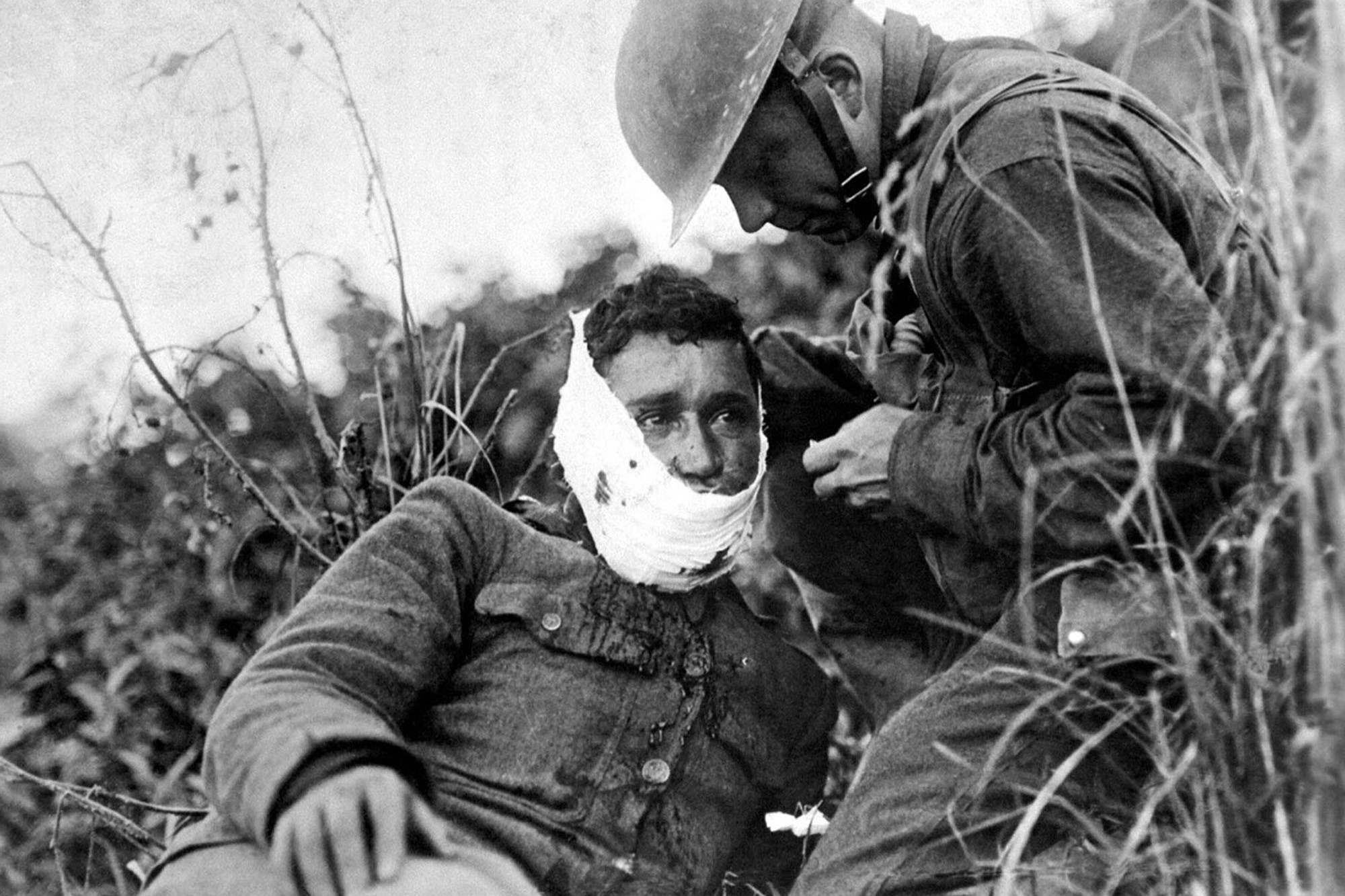
World War 1, also known as the Great War, was a global conflict that reshaped nations and changed history forever. Fought from 1914 to 1918, it involved many of the world's great powers divided into two main alliances: the Allies and the Central Powers. This war saw unprecedented levels of destruction and loss of life, with millions of soldiers and civilians affected. Trench warfare, chemical weapons, and new technologies like tanks and airplanes made this war unlike any before it. But what led to this massive conflict? How did it end? And what were its lasting impacts? Here are 38 compelling facts that will give you a deeper understanding of World War 1.
Key Takeaways:
- World War 1, also known as the Great War, was sparked by the assassination of Archduke Franz Ferdinand and shaped by alliances, new technologies, and significant social and economic impacts.
- The war's legacy includes cultural and artistic influences, medical advancements, and lasting geopolitical effects, making it a pivotal event in shaping the modern world.
The Origins of World War 1
World War 1, also known as the Great War, was a global conflict that reshaped the world. It began in 1914 and lasted until 1918. Here are some fascinating facts about its origins.
- The assassination of Archduke Franz Ferdinand of Austria-Hungary on June 28, 1914, by Gavrilo Princip, a Bosnian Serb nationalist, sparked the war.
- The complex system of alliances in Europe, including the Triple Entente (France, Russia, and the United Kingdom) and the Triple Alliance (Germany, Austria-Hungary, and Italy), played a significant role in escalating the conflict.
- Nationalism, militarism, and imperialism were key factors that contributed to the tensions leading up to the war.
- The Schlieffen Plan was Germany's strategy to quickly defeat France by invading through Belgium, aiming to avoid a prolonged two-front war.
Major Battles and Fronts
The war saw numerous significant battles and fronts, each with its own unique challenges and outcomes. These battles shaped the course of the conflict.
- The Battle of the Marne in September 1914 halted the German advance into France and marked the beginning of trench warfare.
- The Battle of Verdun in 1916 was one of the longest and costliest battles, with over 700,000 casualties.
- The Battle of the Somme, also in 1916, saw the first use of tanks in warfare and resulted in over a million casualties.
- The Eastern Front, primarily between Germany and Russia, was characterized by vast movements and significant territorial changes.
Technological Innovations
World War 1 saw the introduction of many new technologies and weapons that changed the nature of warfare forever.
- Tanks were first used by the British at the Battle of the Somme in 1916, revolutionizing ground combat.
- Chemical weapons, such as mustard gas and chlorine gas, were introduced, causing horrific injuries and deaths.
- Airplanes were used for reconnaissance, bombing, and dogfights, marking the beginning of aerial warfare.
- Submarines, particularly German U-boats, played a crucial role in naval warfare, targeting enemy ships and disrupting supply lines.
The Home Front
The impact of World War 1 extended beyond the battlefield, affecting civilians and economies around the world.
- Women entered the workforce in large numbers, taking on roles traditionally held by men who were now fighting in the war.
- Rationing of food and other essential goods became common in many countries to support the war effort.
- Propaganda was widely used to boost morale, encourage enlistment, and demonize the enemy.
- The war led to significant social and political changes, including the Russian Revolution in 1917, which resulted in the rise of the Soviet Union.
The End of the War
The conclusion of World War 1 brought about significant changes and set the stage for future conflicts.
- The United States entered the war in 1917, providing fresh troops and resources that helped tip the balance in favor of the Allies.
- The armistice on November 11, 1918, marked the end of fighting, though the formal peace treaty, the Treaty of Versailles, was signed in 1919.
- The Treaty of Versailles imposed harsh penalties on Germany, including significant territorial losses, military restrictions, and reparations payments.
- The League of Nations was established as part of the Treaty of Versailles, aiming to prevent future conflicts, though it ultimately failed to stop World War 2.
Notable Figures
Several key figures played crucial roles during World War 1, influencing its course and outcomes.
- Kaiser Wilhelm II of Germany was a central figure whose aggressive policies and militarism contributed to the war's outbreak.
- Woodrow Wilson, the President of the United States, played a significant role in the peace negotiations and proposed the Fourteen Points for a just and lasting peace.
- General John J. Pershing led the American Expeditionary Forces in Europe, helping to secure victory for the Allies.
- Tsar Nicholas II of Russia was overthrown during the war, leading to the rise of the Bolsheviks and the establishment of the Soviet Union.
Cultural Impact
World War 1 had a profound impact on art, literature, and society, influencing generations to come.
- The war inspired a wealth of literature, including works by poets like Wilfred Owen and Siegfried Sassoon, who wrote about the horrors of trench warfare.
- The Lost Generation, a term coined by writer Gertrude Stein, referred to the disillusioned youth who came of age during the war.
- The war influenced art movements such as Dadaism, which emerged as a reaction to the perceived senselessness of the conflict.
- Memorials and monuments were erected around the world to honor those who fought and died in the war.
Medical Advancements
The brutal conditions of World War 1 led to significant advancements in medical care and treatment.
- The use of antiseptics and improved surgical techniques helped reduce infection rates among wounded soldiers.
- Blood transfusions became more common, saving countless lives on the battlefield.
- The war spurred advancements in prosthetics, as many soldiers returned home with severe injuries and amputations.
- Shell shock, now known as PTSD, was first recognized and studied during the war, leading to better understanding and treatment of psychological trauma.
Economic Consequences
The economic impact of World War 1 was felt worldwide, leading to significant changes in global economies.
- The war led to massive debt for many countries, particularly in Europe, as they borrowed heavily to finance the conflict.
- Hyperinflation in Germany during the early 1920s was a direct result of the economic strain caused by the war and the reparations imposed by the Treaty of Versailles.
- The United States emerged as a leading economic power, having lent substantial amounts of money to the Allies during the war.
- The war disrupted global trade, leading to shortages of goods and raw materials in many countries.
Legacy of World War 1
The legacy of World War 1 continues to shape the world in various ways, from geopolitics to cultural memory.
- The red poppy became a symbol of remembrance for those who died in the war, inspired by the poem "In Flanders Fields" by John McCrae.
- The geopolitical boundaries drawn after the war, particularly in the Middle East, have had lasting impacts and continue to influence conflicts in the region today.
Reflecting on World War 1
World War 1 reshaped the world in countless ways. From the introduction of trench warfare to the use of chemical weapons, the conflict brought about significant changes in military tactics and technology. The war also led to the fall of empires, redrawing borders and creating new nations. Millions of lives were lost, and the impact on soldiers and civilians was profound. The Treaty of Versailles aimed to ensure peace but also sowed the seeds for future conflicts. Understanding these facts helps us appreciate the complexities and consequences of this global event. By learning from history, we can better navigate present and future challenges. World War 1's legacy reminds us of the importance of diplomacy, the cost of conflict, and the resilience of the human spirit.
Frequently Asked Questions
Was this page helpful?
Our commitment to delivering trustworthy and engaging content is at the heart of what we do. Each fact on our site is contributed by real users like you, bringing a wealth of diverse insights and information. To ensure the highest standards of accuracy and reliability, our dedicated editors meticulously review each submission. This process guarantees that the facts we share are not only fascinating but also credible. Trust in our commitment to quality and authenticity as you explore and learn with us.


